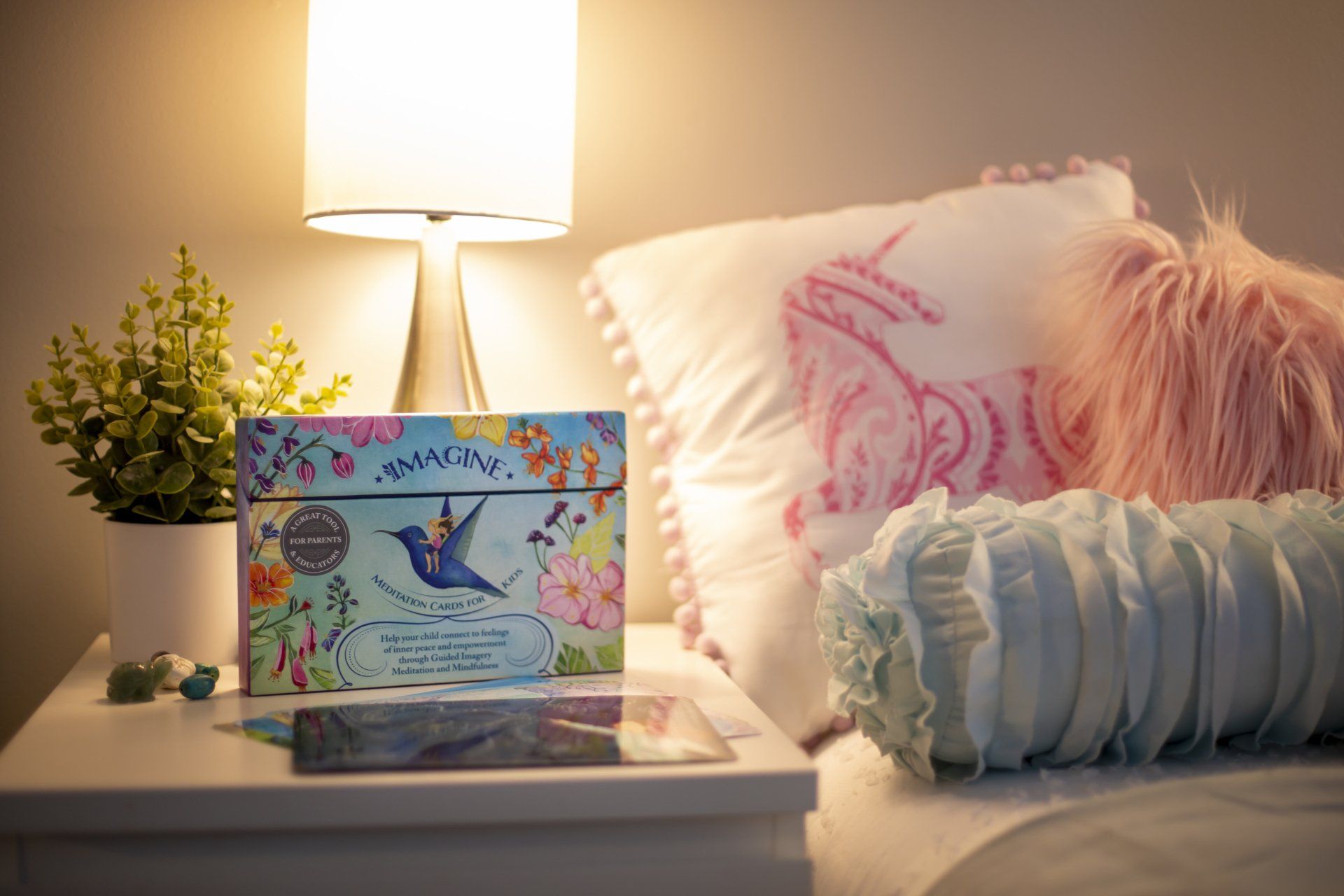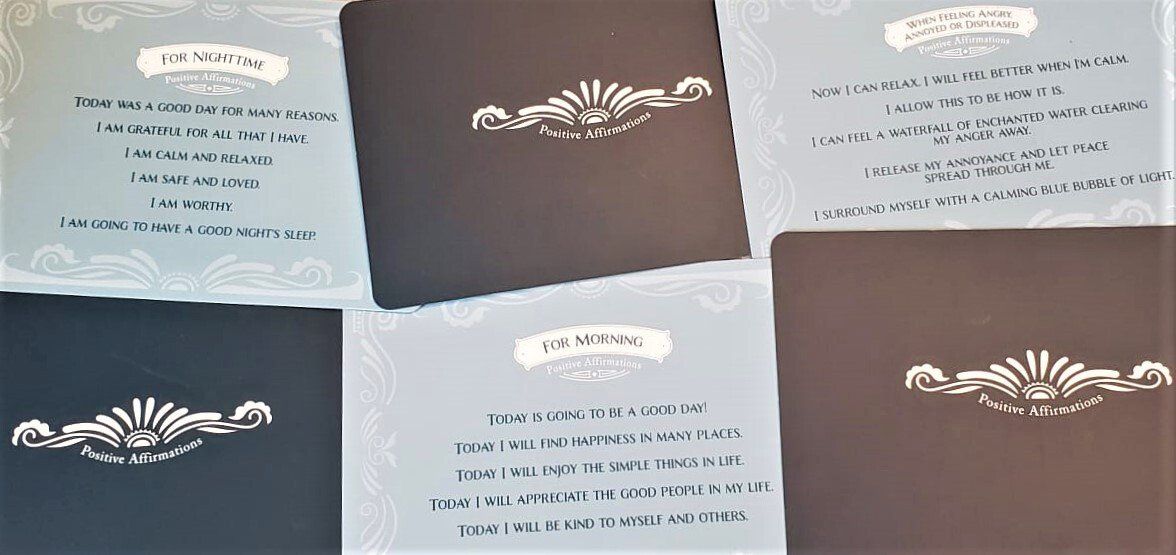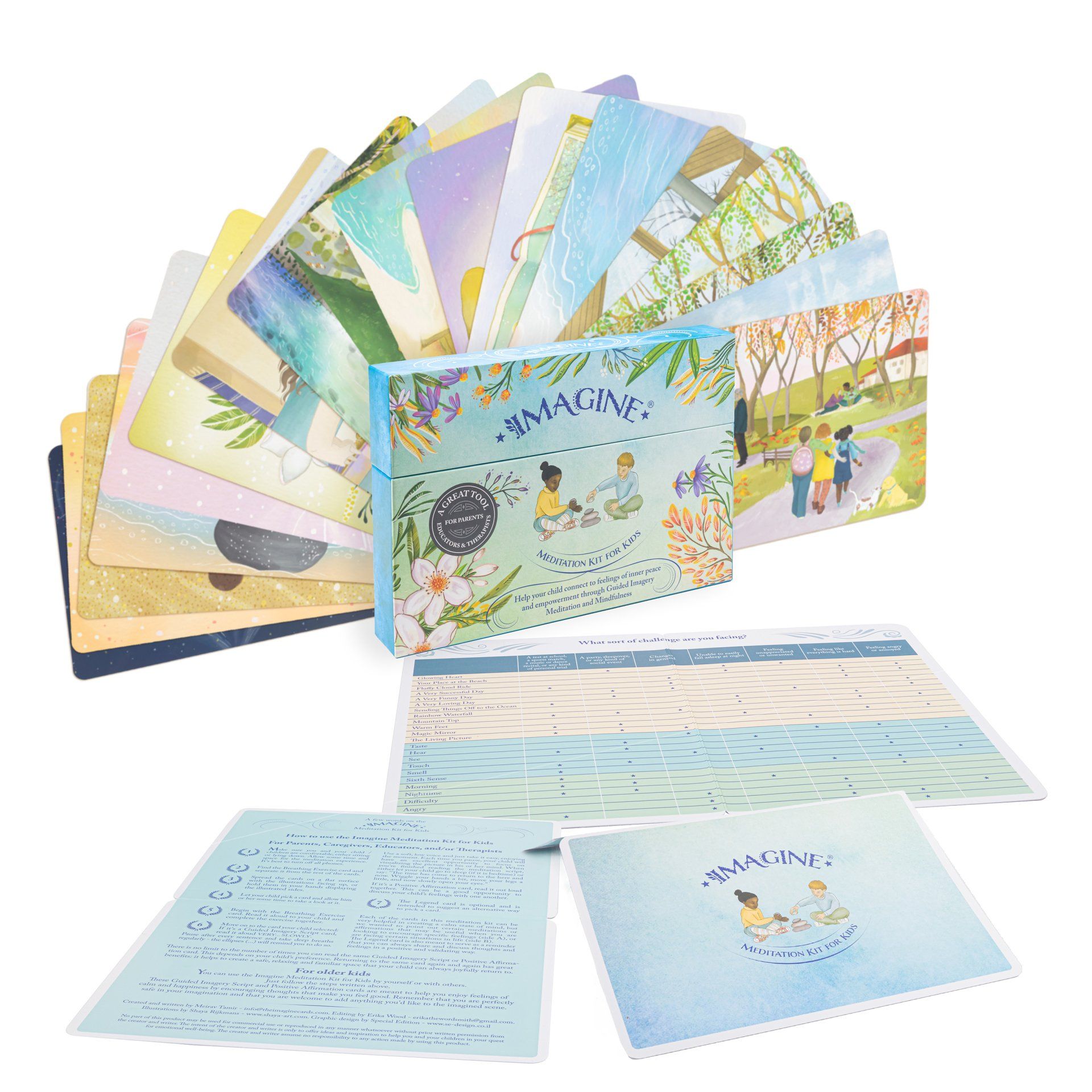You’ll Love This: Bedtime Routine With Guided Imagery Meditation
In my last blog I discussed the everyday challenge of going to sleep and how a simple bedtime routine can be a HUGE help.
So now a little more into detail with these great ways to make it work!
Phase One – Taking Care of the Body
Try dedicating the first 10 minutes of the routine to basic actions that prepare the body for hopping into bed, such as brushing teeth, getting into pjs, and snagging a glass of water.
Do your best to make sure these happen at about the same time and, if possible, in the same order. And don’t forget to include a cut-off time for electronics – at least 30 minutes before it’s time to fall asleep.
Blue light has been shown to limit production of melatonin, a hormone that’s key to maintaining a healthy sleep cycle. Avoiding electronics right before bedtime will help kids fall asleep faster and wake up feeling rested.
Once all of this is out of the way, you can move on to the next phase of the routine.
Phase Two – Taking Care of the Heart and Mind
The second phase, in my opinion, is the best part of the routine,
and it actually offers a priceless opportunity for you to create a 100% nurturing experience for your kids.
In fact, the content you pour into the next 10 minutes or so will have a life-long effect on them.
There are a ton of different things you can do to treasure your time together. You can…
- Read a book
- Take turns saying things you’re grateful for
- Talk about the good things that happened that day
- Sing a song or say a prayer
- Say goodnight to family members, friends, the moon, the stars, the birds, or even the trees outside
The Guided Imagery Meditation Option
If you haven’t before, you could also give guided imagery meditation a try!
You might be surprised how fun and calming it is to visualize a pleasant scene as if you’re part of it.
There are many different types of meditation you can do depending on your preference: breathing practice, progressive relaxation, mindfulness meditation focused on the five senses, landscape visualization, self-esteem exercises… And the list goes on!
Get started with one of my guided imagery meditation scripts:
The Protection Bubble. Then you can branch out based on your success. (Many of my customers swear by bedtime meditation!)
Keep it short so bedtime remains as consistent as possible, but don’t be in a hurry. Above all, make sure to be present.
These are some of life’s most precious moments, so just relax into the bonding experience.
The more you give, the more you’ll receive during these positive, soothing 10 minutes.
Oh, and try not to blink… They’ll be all grown-up so fast! :)
The Imagine Blog



